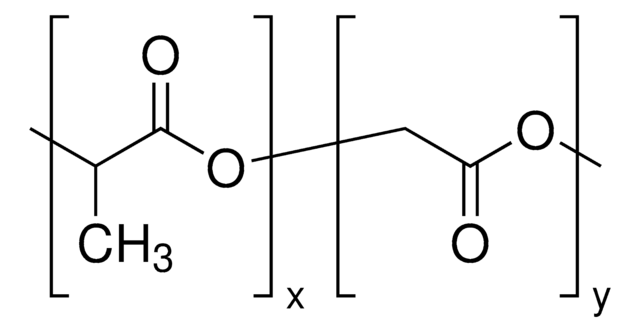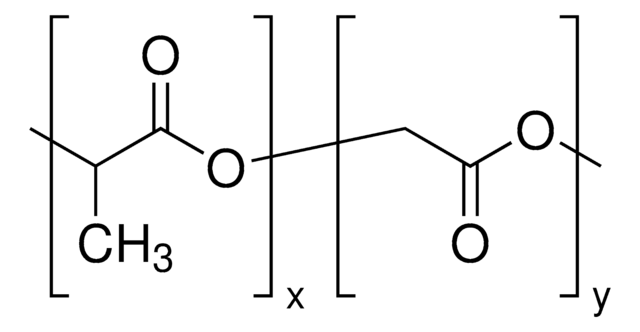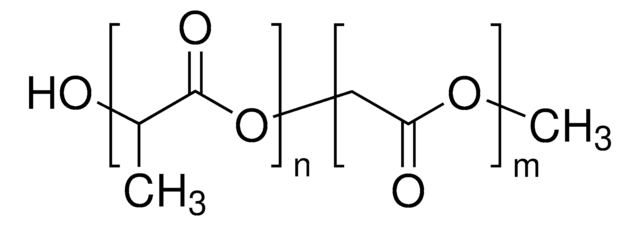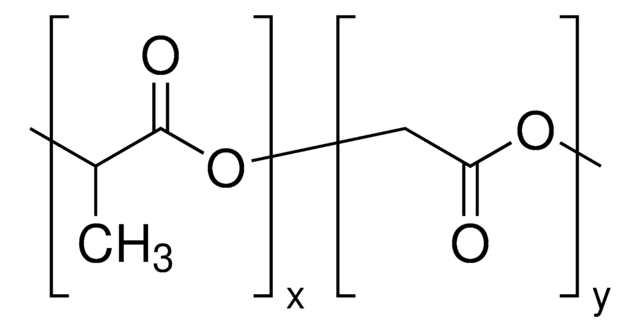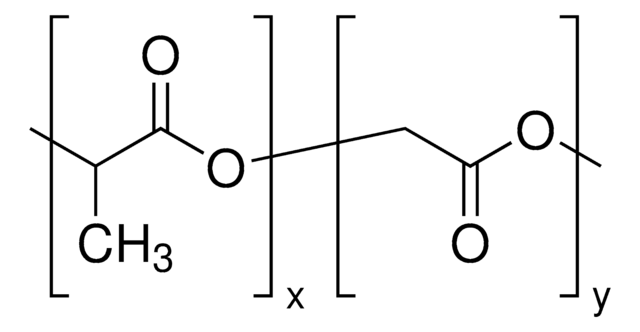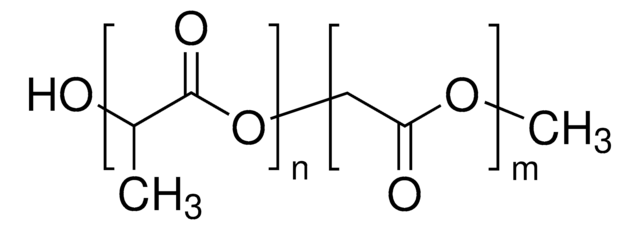The solubility of this product is not determined. However, various sources state that Poly(D, L-lactide-co-glycolide) is soluble in organic solvents such as methylene chloride, tetrahydrofuran, ethyl acetate, acetone, chloroform, and hexafluoroisopropanol. The concentration has not been determined for these solvents.
P1941
Poly(D,L-lactide-co-glycolide)
lactide:glycolide (75:25), mol wt 66,000-107,000
Synonym(s):
LACTEL® B6007-1, PLGA
Select a Size
Select a Size
About This Item
Recommended Products
form
pellets
Quality Level
feed ratio
lactide:glycolide (75:25)
mol wt
66,000-107,000
storage temp.
−20°C
SMILES string
OCC(O)=O.CC(O)C(O)=O
InChI key
XBBVURRQGJPTHH-UHFFFAOYSA-N
Looking for similar products? Visit Product Comparison Guide
General description
Application
Features and Benefits
Physical form
Legal Information
Storage Class Code
11 - Combustible Solids
WGK
WGK 3
Flash Point(F)
Not applicable
Flash Point(C)
Not applicable
Personal Protective Equipment
Choose from one of the most recent versions:
Certificates of Analysis (COA)
Don't see the Right Version?
If you require a particular version, you can look up a specific certificate by the Lot or Batch number.
Already Own This Product?
Find documentation for the products that you have recently purchased in the Document Library.
Customers Also Viewed
Articles
Innovations in polymer technology have had a significant impact on the advancement of novel drug delivery systems.
Humankind has utilized protein materials throughout its existence, starting with the use of materials such as wool and silk for warmth and protection from the elements and continuing with the use of recombinant DNA techniques to synthesize proteins with unique and useful properties.
-
What is solubility information of plga 75:25
1 answer-
Helpful?
-
Active Filters
Our team of scientists has experience in all areas of research including Life Science, Material Science, Chemical Synthesis, Chromatography, Analytical and many others.
Contact Technical Service


